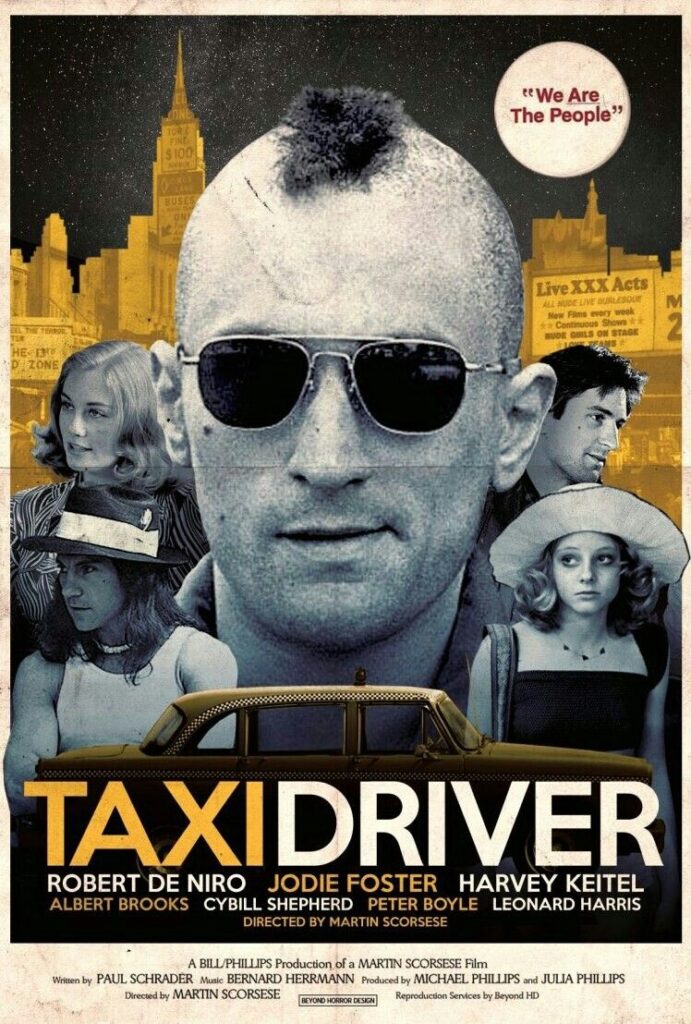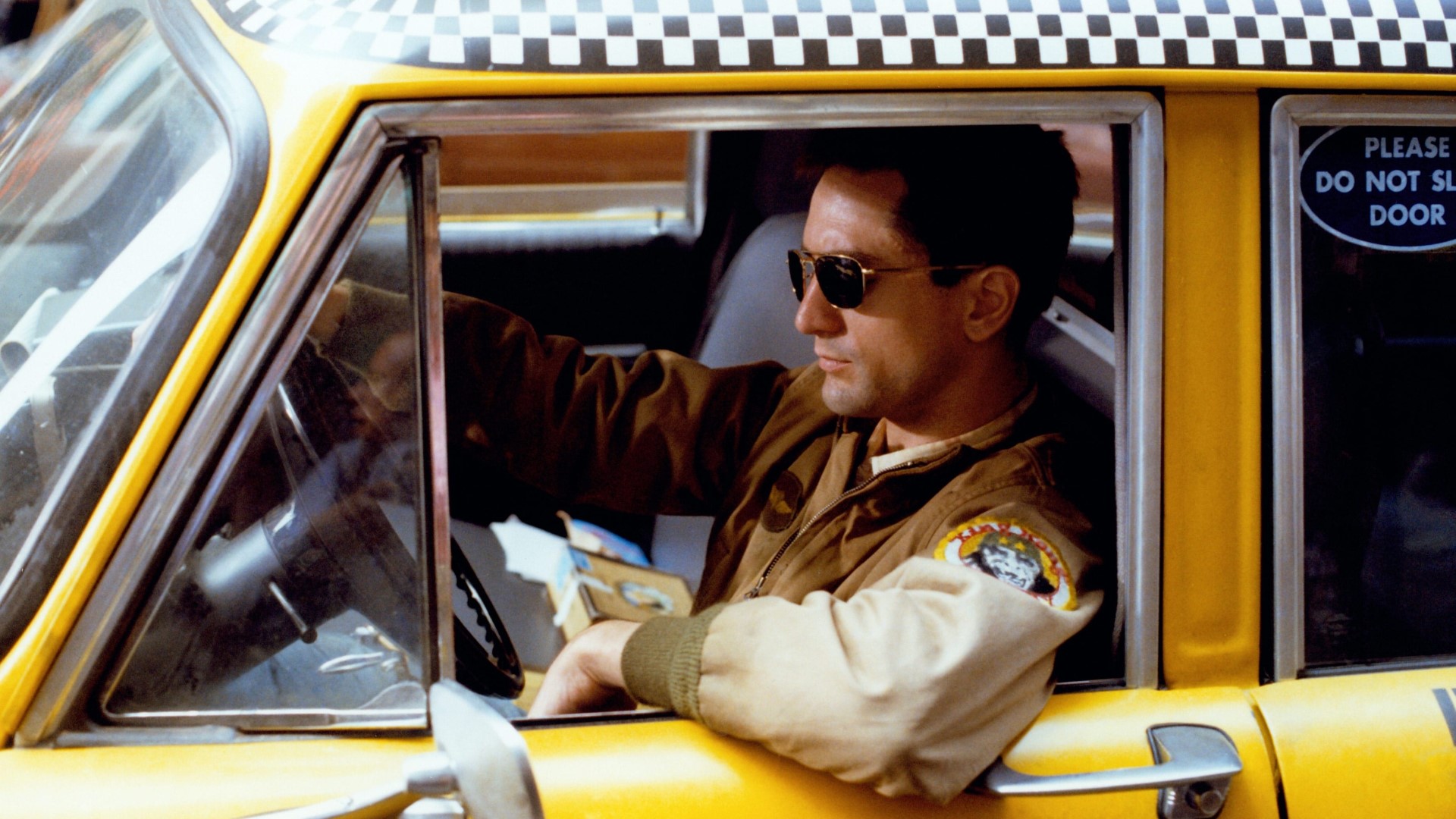Taxi Driver, directed by Martin Scorsese in 1976, explores the complexities of the human psyche, offering a both sickening and fascinating glimpse into the dark recesses of the human mind.
This thought-provoking film, often overlooked as a spiritual journey, showcases Scorsese’s talent for diving into the spiritual and the profane. Through the character of Travis Bickle, excellently portrayed by Robert De Niro, Taxi Driver unravels a narrative that portrays the decay of society and the struggle between good and evil.
A Spiritual Journey in the Depths of New York City
Travis Bickle, a lonely and forgotten war veteran, finds solace in becoming a taxi driver, hoping to escape his own isolation. However, his newfound job thrusts him into the heart of corruption and hypocrisy that permeates the city. The portrayal of New York in Taxi Driver serves as a metaphor for the human psyche, representing both the capacity for good and the presence of evil within us.
The bright neon lights illuminate the underbelly of society, which Bickle disdainfully refers to as the “scum.” As Bickle encounters a variety of characters throughout the film, some embody goodness, while others embody the darkness lurking within humanity.

The Profane Interactions of a Sinister Society
Bickle journals his experiences as a taxi driver, sharing narrations that center around the repulsive behavior of the city’s inhabitants and the sordid streets they traverse. Scorsese effectively captivates the audience with the idea that the city harbors a dark and malevolent side. The introduction of various characters strengthens this notion. Bickle encounters fellow taxi drivers who indulge in perverse and xenophobic tales. Moreover, a passenger, played by Scorsese himself, chillingly describes his grotesque fantasy of murdering his unfaithful wife. These encounters take a toll on Bickle’s mind, highlighting the repugnant human interactions that occur in this film, surpassing the unsavory objects found on the streets.
The Symbol of Hope and Deterioration: Betsy
Amidst the darkness of Bickle’s world, Cybill Shepherd’s character, Betsy, becomes a symbol of light, hope, and purity. Betsy volunteers for presidential candidate Charles Palantine, catching Bickle’s attention during his taxi shifts. Intrigued by her presence, Bickle develops a fascination for her, despite his awkward demeanor. Initially, Betsy finds Bickle charming, but their relationship takes a turn when he takes her to a seedy movie theater.
The rift in their relationship is poignantly portrayed through Scorsese’s skillful camera work, which separates Bickle from Betsy as his attempts at reconciliation crumble over the phone. The collapse of this one positive relationship further accelerates Bickle’s mental decline, as he becomes increasingly dangerous and unpredictable. Betsy represents the struggle between good and evil, but her departure emphasizes the limited power of goodness against overwhelming corruption.
A Descent into the Abyss
Following Betsy’s departure, the film unfolds events that push Bickle further towards the edge of the abyss. He acquires a gun, seeks misguided advice from a friend, and futilely tries to rescue a young prostitute named Iris from her pimp, Sport. The climax of the film culminates in Bickle’s failed attempt to assassinate Palantine and his subsequent return to the brothel where Iris works, where he murders Sport and a client.
However, Taxi Driver does not glorify this scene or Bickle’s transformation. Instead, it presents it as a tragic downfall. This sequence marks a stark shift in tone, with darkened lighting, the absence of the melancholic jazz score, and a harrowing outburst of violence. The filmmakers intend to remind the audience of the horrific consequences resulting from unrestrained moral corruption.

The Ambiguous Hero and the Consequences of his Actions
Curiously, Bickle is portrayed as a hero after his violent act. The newspapers laud his actions, while Iris’ parents even express gratitude, believing that he has rescued their daughter. However, Taxi Driver refuses to offer a straightforward, happy ending. Screenwriter Paul Schrader himself suggests that Bickle is not cured by the film’s end and suggests that he may continue down a path of even greater depravity, now that he has been rewarded for his violent deeds.
In the film’s closing moments, Bickle encounters Betsy once more, but their brief reunion further illuminates the divide between the two characters and exemplifies Bickle’s profound descent. The dichotomy between the sacred and the profane is as pronounced as ever, with Bickle driving away, glimpsing at Betsy through his rearview mirror before overtly turning his face away, consumed by his madness.
The Poignant Symbolism of “The Pilgrim, Chapter 33”
During a crucial moment in Taxi Driver, Betsy references a Kris Kristofferson song titled “The Pilgrim, Chapter 33.” The specific line she recites, “He’s a prophet and a pusher… He’s a walking contradiction, partly truth, partly fiction,” encapsulates Bickle’s perpetual struggle between good and evil. Bickle’s tumultuous journey on the streets of New York mirrors the internal battles faced by every individual. Scorsese and his team masterfully execute this exploration of the profane and spiritual, creating a film that stands as a defining masterpiece of cinema.
Wrapping Up
Taxi Driver, an introspective and thought-provoking film, delves into the depths of the human psyche by examining the decay of society, the struggle between good and evil, and the profound effects of corruption on the human mind. The movie offers a captivating exploration of the inner demons that plague humanity through Travis Bickle’s spiritual journey, which Robert De Niro portrays so beautifully. Its poignant symbolism, remarkable performances, and masterful storytelling elevate Taxi Driver to the status of a cinematic gem.
FAQs
1. Is Taxi Driver based on a true story?
While Taxi Driver is not based on a specific true story, it draws inspiration from the dark underbelly of city life and the mental struggles faced by individuals in society.
2. Did Taxi Driver receive any awards?
Yes, Taxi Driver received numerous accolades, including four Academy Award nominations. It ultimately won the Palme d’Or at the Cannes Film Festival.
3. What was the significance of the X rating initially assigned to Taxi Driver?
The X rating was indicative of the film’s intense and disturbing content. However, Martin Scorsese made slight edits to secure an R rating without compromising the film’s core themes.
4. How did Taxi Driver impact Martin Scorsese’s career?
Taxi Driver played a pivotal role in solidifying Martin Scorsese’s reputation as a masterful filmmaker. It showcased his ability to explore complex and controversial subjects while maintaining artistic integrity.
5. Can Taxi Driver be seen as a metaphor for society?
Absolutely. Taxi Driver effectively employs symbolism to represent broader societal issues, such as the decay of urban life, the juxtaposition of good and evil, and the struggle for spiritual redemption.













